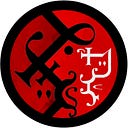Beast folks of the East
The Beast folks of the Beasts’ Nations are not the only animal people of the Axam continent. The Angelic Unison is home to four species: the Lepin, the rabbit people; the Kitsune, the fox people; the Strixian, the owl people; and the Kepheri, people with a scarab for a face.
The presence of non-human species has always been a challenge to the Angelist religion: one of the central ideas is that all people are fundamentally and intrinsically equal, and individual differences are just surface features that suggest how someone can better contribute to the greater good.
In this worldview, people with angel blood are just like anyone else, even if sometimes they have striking features, like orbiting rocks around their heads, feathers as hair, and multiple eyes. Their predispostion for some magic arts is not a guarantee and should not in any way be seen as a lineage of some kind. But, you know, if someone has a talent it would be a sin to let it go to waste: would you nudge a girl with perfect pitch to join the choir? Or a tall and strong boy to become a soldier?
The Beast folks have more than some differences with humans, nothing that would put them in another category entirely, but still quite evident. There are their distinct appearances, obviously, and some dietary preferences and restrictions. There are also some predispositions widespread among the population: lepins tend to be athletically gifted especially when it comes to running and jumping, while kitsunes have, generally, an aptitude for transmutation and illusion magic.
The Angelic bureaucracy always had to find a balance between pushing these folks into professions where they could benefit the Unison most and letting them self-determine, both for moral and practical reasons. The clerical authorities don’t want to isolate beast folk since that would create resentment and create minority cultures nested inside the main one. Everyone must cooperate in the Great Celestial Design which is the Angelic Unison. Also, there are political reasons: attempts at schism are not unheard of, and giving control of some sectors to some clearly defined group could become a liability in case of unrest.
There is therefore an association between some folks and some professions.
Lepins are overrepresented in all postal and delivery services: they are messengers par excellence. Kitsunes are very present in the arcane research as well in the “conversion villages” (someone would say brainwashing sites) and in the bardic arts. Strixians, due to their metabolism, are vastly employed in all nightly activities (like innkeepers, sentries, or keepers of the city clock).
Kepheris are just a mystery. The scarab people can see the immediate future and, possibly, even further in time. But they can’t explain what they see: their telepathic communication makes them able to the other to understand them but in general terms. While speaking with a kepheri, you’ll hear clicks and chirping and yet you’ll understand what they mean nonetheless even if, in a way, you are paraphrasing in your mind. Despite the attempts, Kepheris have their own culture, language even alphabet. Luckily, they are some of the most devout to the angelic cause and many are key figures in the church hierarchies as trusted advisors and confidants. Still, some of them will sometimes do unexpected and inscrutable things: some kepheris will just quit their job and go to faraway places out of the blue, with the only explanation given a laconic “I must do it”. Some of these inexplicable actions are downright criminal, including defections, treasons, and political assassinations. Yet, these incidents have been rare enough and the kepheris’ usefulness is so great that they are still present in many episcopal courts.
The Beast folk don’t have their own territory as they have spread on all the Unison, but there are some concentrations of them. Sometimes it is on a small scale, such as cities’ districts: most big towns have “owl neighbors” that follow a lopsided time schedule, with shops opening at sunset and closing at dawn.
Sometimes there are regions with a preponderance of kin: Kepheris, in particular, are mostly all in the south, near the Symmetry Gardens, and eventually move from there to look out for jobs or assignments, coming back at some point in their life.
